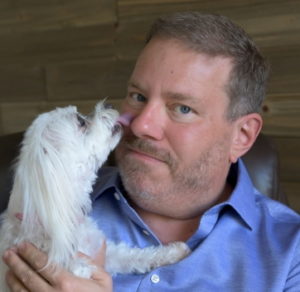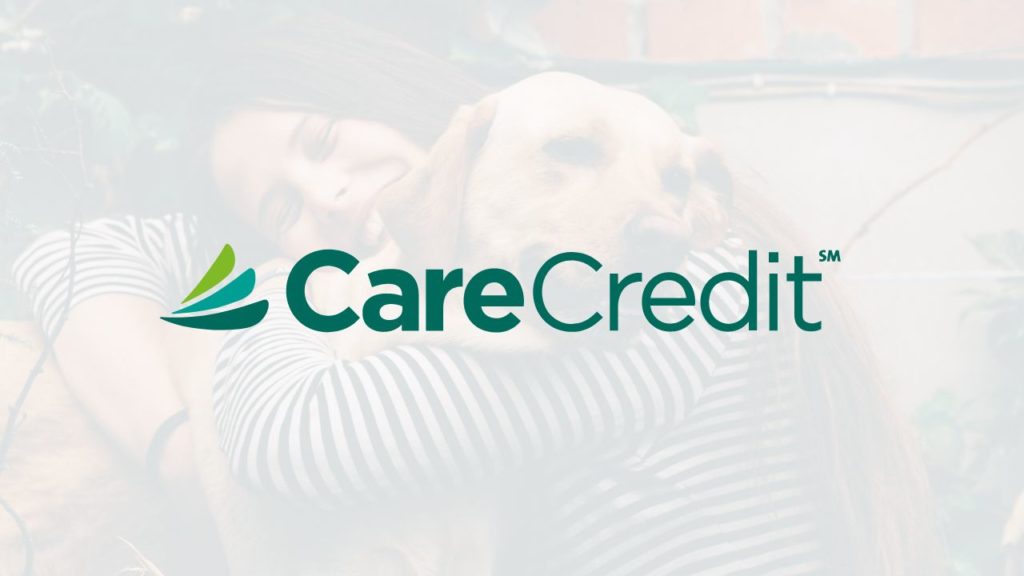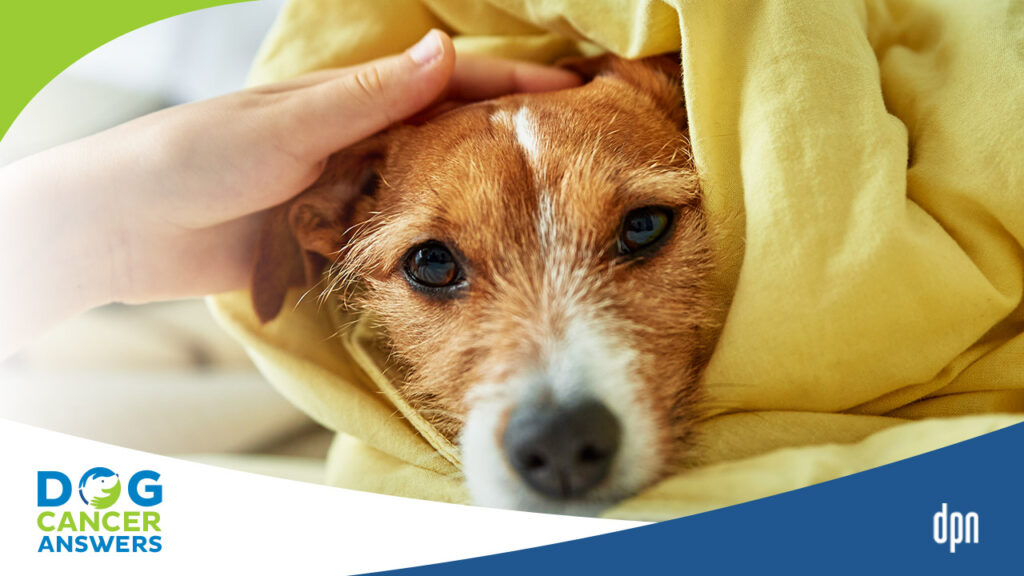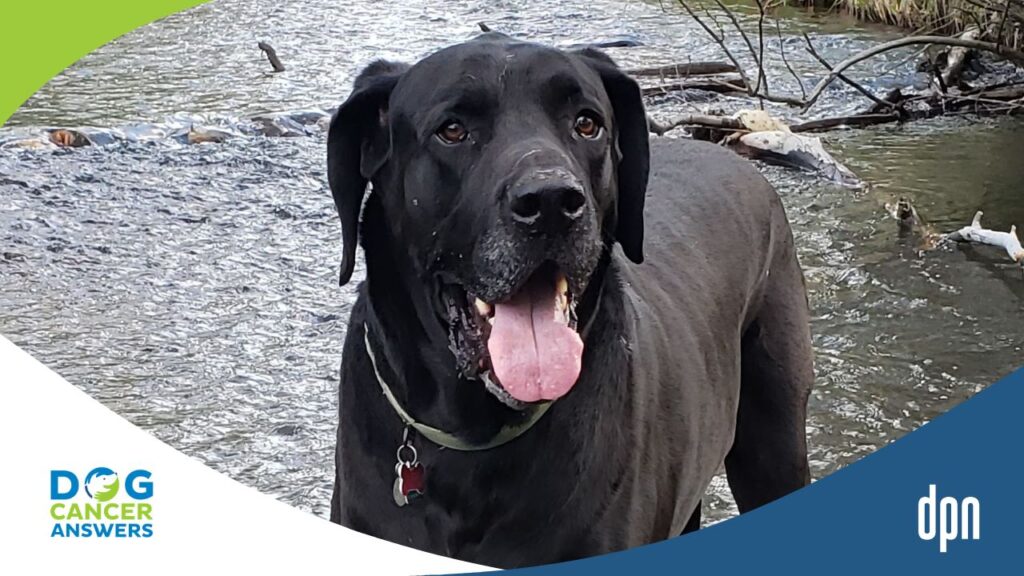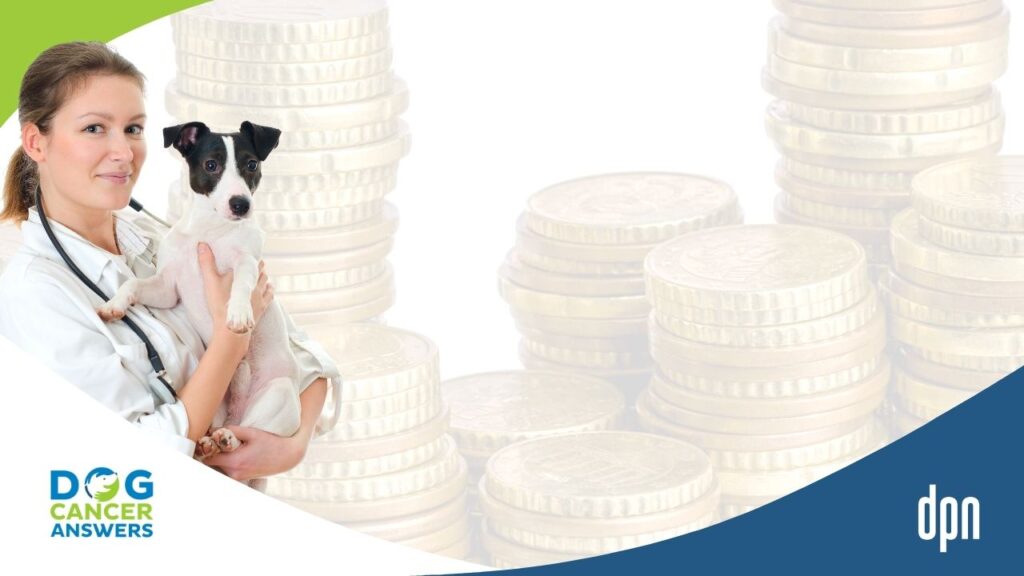EPISODE 157 | RELEASED March 7, 2022
Dog Cancer Cost: Economics of Dog Cancer | Dr. Megan Duffy Deep Dive
Cancer treatment and diagnosis is expensive… but why? And are there things you can do to help your dog on a budget?
SHOW NOTES
Veterinary oncologist Megan Duffy joins us to explain and ins and outs of dog cancer economics. A consult with an oncologist can run a couple hundred dollars… but that money gets you the full attention of an expert who focuses on dog cancer and has reviewed your dog’s individual case ahead of time. The oncologist should also be giving you a rundown of different treatment options to help you figure out the option that will give your dog the most benefit while still staying within your budget.
Big takeaways?
- Be honest about your budget so the oncologist can tailor treatment plans for you.
- Ask about follow-up care and what that might cost.
- Your vet does not take your treatment choice personally – it needs to be the option that YOU are comfortable with.
- It is okay to choose a less expensive treatment option.
- Dr. Duffy has tips for things you can do to save a little money during chemotherapy without cutting corners for your dog’s care.
Jenna Mahan: Weird Things Dogs Get Into at the Holidays podcast episode
[00:00:00] >> Dr. Megan Duffy: None of this is $1, and we’re trying to say: What’s our cost benefit ratio here? And for some families that gets very black and white, where this is the budget that we have, what can we do? And for some folks out there, the sky’s the limit.
[00:00:20] >> Announcer: Welcome to Dog Cancer Answers, where we help you help your dog with cancer. Here’s your host, James Jacobson.
[00:00:28] >> James Jacobson: Hello friend, and welcome to Dog Cancer Answers. Today we are going to expose and explore everything that you need to know about the economics of treating dog cancer conventionally. We are going to be speaking with a veterinary oncologist because as you know, if you are on this iditarod, treating dog cancer can get awfully expensive.
It used to be when we first started this podcast, it was between $6,000 and $8,000. That number has steadily increased as advances in science have increased and as everything has gotten more expensive. And so to help us understand this and to help us save maybe a few dollars, we are once again joined by Dr. Megan Duffy. She is a veterinary oncologist. Dr. Duffy, thank you so much for being with us today.
[00:01:21] >> Dr. Megan Duffy: Thank you for having me.
[00:01:22] >> James Jacobson: And thank you for talking to us about this very interesting and sometimes uncomfortable conversation for, for veterinarians to talk about. I really honor you and respect you for that. And I’m glad that you’re here.
[00:01:37] >> Dr. Megan Duffy: Oh, absolutely. I think money is the least fun part of any conversation that we have to have.
[00:01:43] >> James Jacobson: But it drives so many of the decisions that people have when they have a dog with cancer, because not only is it all the emotions, and this came out of nowhere, and perhaps a sense of guilt, or all sorts of feelings, but this is expensive, and this is often happening to a dog who is, let’s just say, not a puppy anymore.
[00:02:05] >> Dr. Megan Duffy: And I think that’s where it gets really hard, that at the end of the day, none of this is $1 and we’re trying to say: What’s our cost benefit ratio here? And for some families that gets very black and white where this is the budget that we have, what can we do? And, you know, for some folks out there, the sky is the limit, and of course, we’re going to respect that as much as possible, but it is, at the end of the day, we’re buying time. Of course, in oncology, we want to buy quality time. And that has to be our biggest criteria in as far as treatment goes, but at the end of the day, it all costs money.
[00:02:45] >> James Jacobson: So let’s start off with how much money? What are we talking about? What is the average for cancer treatment and what are the guidelines?
[00:02:54] >> Dr. Megan Duffy: Well certainly everything varies a little bit, but if we’re thinking about, you know, from a medical oncology standpoint, some sort of chemotherapy protocol, we’re gonna be looking for a standard injectable chemotherapy protocol somewhere in the thousands. You know, depending a little bit on where you live, perhaps a CHOP protocol for a lymphoma – excuse me, my dogs are barking. Um, but a standard-
[00:03:19] >> James Jacobson: It’s Dog Podcast Network. We are so used to that.
[00:03:22] >> Dr. Megan Duffy: A standard CHOP based protocol for an average sized dog is, is easily going to be about $10,000 start to finish. Um, certainly there are less expensive protocols for different diseases. Maybe we’re talking about treating a dog with hemangiosarcoma for $5,000 or $6,000 start to finish. And then radiation therapy is a whole different ball of wax where it’s always gonna be thousands, and it’s a, it’s a tough number. For something fairly palliative, maybe, you know, $3,000, $4,000 or $5,000. For a more definitive, kind of that curative intent protocol, $10,000 plus is becoming the norm.
[00:03:59] >> James Jacobson: And then even some of the more, like things like CyberKnife and things that are sort of this amalgam between surgery and radiation, how expensive is that, if it’s available?
[00:04:09] >> Dr. Megan Duffy: Often, any of those very specialized radiation therapies, they definitely carry the advantage of treatment in few sessions, um, compared to more conventional therapy, but oftentimes the degree of planning, the very specialized equipment, makes them similarly expensive for more standard radiation protocols.
[00:04:31] >> James Jacobson: And we always talk about chemotherapy and radiation, but of course the third triad in traditional treatment is surgery, and surgery for cancer can get pretty expensive as well.
[00:04:41] >> Dr. Megan Duffy: Oh, absolutely. I think it’s so much of a difference, even looking at a very standard procedure, like an abdominal surgery or an amputation, that I feel like a couple of years ago, an amputation was maybe $3,000 and now it’s $5,000 and it just, everything is getting more and more expensive.
[00:05:02] >> James Jacobson: Well that begets the next question, why?
[00:05:05] >> Dr. Megan Duffy: That is an excellent question. Part of that, of course, is for everyone who is out there and is going to see their veterinarian or their specialist, the doctor is not the one who sets any of the prices. I also can’t change it, or everything would be free. That is all based on what’s the market? What’s, you know, inflation and all of that junk, but also what keeps the lights on in the hospital? What pays for the equipment and these new bells and whistles that we have at our disposal so that we can have really safe, really effective therapy?
And, you know, really nice housing for our patients while they’re hospitalized and, you know, state-of-the-art technology in terms of monitoring them under anesthesia, and all of those little things that kind of add up over time so that we aren’t cutting corners with the care that we’re giving as well.
[00:05:55] >> James Jacobson: When you have this discussion, and I’m imagining this discussion is part of your initial consultation, do you find that there’s like real sticker shock, or are people pretty prepared that this is gonna get costly?
[00:06:08] >> Dr. Megan Duffy: I think there’s a little bit of everything. And some of it is, oh gosh, that’s a lot less than I thought. And I love those situations. I don’t always get them. Or, you know, this is about what our vet prepared us for. That’s a great answer. Uh, every so often it’s just that jaw hits the floor of, I had absolutely no idea how much this is going to cost, or this is not a comfortable number for me. And some of that really comes down to, as well – we’re going to give you several different options for your pet, depending on what’s appropriate for them and for their disease. And I had a professor in vet school who used this phrase and I stole it because I love it: We’re gonna tell you about the Cadillac, but it’s okay if you take the Ford. We want to do what’s comfortable emotionally, personally, financially, all of those things too.
So we’re not out there to try and say, well, this is the best treatment and the most expensive treatment, and clearly your only option.
[00:07:04] >> James Jacobson: Okay. So let’s talk a little bit about this role, where you, as a veterinary oncologist, kind of maybe you’re feeling a little bit like, or it’s perceived that, oh, they’re like a car salesman trying to get me into the Caddy when really all I got is a budget for a Chevy. How is that for you and how do you convey to your clients that, hey, you know, as you said earlier, we don’t set the price. This is just what it costs.
[00:07:30] >> Dr. Megan Duffy: And some of that is a little bit of honesty, that your decision here today needs to be what is comfortable for you. It needs to be what makes you sleep at night that you’re doing right by your pet, but also by your budget. You need to have a roof over your head.
This does not change my day to day in any significant way. I can put dinner on the table and that has nothing to do with whether or not you want to do a full body CT scan today. That is a hundred percent up to you, and I never want people to feel pressured that they have to do something right here right now because we said so. It has to be the right fit.
[00:08:07] >> James Jacobson: You as an oncologist, are you in any way, at least in your, in where you are right now, compensated by the amount of revenue that you bring into the practice?
[00:08:19] >> Dr. Megan Duffy: I would say for the vast majority of us that, at least in the private sector, we have some sort of base salary and then there is an amount of production that we may see in compensation for that.
[00:08:32] >> James Jacobson: Production, that’s the term. Yeah.
[00:08:33] >> Dr. Megan Duffy: I would say in reality, it is more of if I have a really crazy busy week or month or something like that, I’m going to see that reflected. But it’s not a driver to add on a test here and there, or, you know, do just one more treatment, even if the pet doesn’t need it. I mean, oh my gosh, that does NOT factor in as far as, well, you know, I might take five more dollars home if they do the CT scan. I mean, that’s, it, it really doesn’t become a part of that thought process.
[00:09:07] >> James Jacobson: Well, let’s talk a little bit about the role of diagnostics because it’s, yes, the chemo is expensive, but all these diagnostic tests and, you know, the frequency that they need to happen can sometimes be daunting.
[00:09:21] >> Dr. Megan Duffy: That can definitely be tough. And at first it sounds like you want to do this test and you have to do it again, and you want to do it over and over, what is the point of that? We just did it. And can’t you tell that the chemo is working if my dog is still feeling well? There are a lot of internal things going on that can be very, very subtle, and your dog will feel great, even if their cancer is progressing inside.
And so I almost think of it as: if we’re going to make the investment, you know, emotionally, financially, et cetera, of going forward with treatment, my obligation to you is to make sure that it’s working. Because if it’s not, I don’t want to lose time where we could change to something that’s more effective, or risk side effects if we’re not getting the outcomes that we want. So I think it’s very important that gosh, if we’re gonna commit to this set of treatment, I want it to work for you, or we need to change, or we need to stop. I don’t want to just throw treatment at your dog and assume that everything’s fine.
[00:10:20] >> James Jacobson: So when you’re helping people make that decision between the Caddy and the Chevy, what are some of the levers that you have, like, oh, you don’t want leather seats? Well, we’ll put you in the Velour. Or you don’t want power steering? I don’t know. It’s been a long time since I bought a, an American car. But what are some of the things that you do have control over that can impact the bottom line?
[00:10:43] >> Dr. Megan Duffy: As far as that goes, I think there are a few parts to that question. And one, of course, is the cost of treatment usually reflects its level of aggressiveness and potentially an improvement in outcome. And sometimes the crummy part of that is the most aggressive or potentially the best potential outcome associated with a given option is just gonna be the more expensive one. And it doesn’t mean that’s all or nothing. So I will lay this out as most aggressive, middle of the road, least aggressive, if we don’t do anything – and that is absolutely an option – what does that look like to keep your pet comfortable. And so those are sort of our, our tiers, so to speak, of, you know, most aggressive to least aggressive therapy, which is usually more expensive to less expensive. And then there are things that can be done during the course of a chemotherapy treatment that oftentimes can save money and doesn’t at all compromise quality of care.
[00:11:45] >> James Jacobson: Oh, do tell, Dr. Duffy.
[00:11:47] >> Dr. Megan Duffy: And these are, these are not secrets by any means, and I, I freely give this information out to my clients too.
[00:11:53] >> James Jacobson: This is not clickbait. Okay.
[00:11:55] >> Dr. Megan Duffy: Um, most of the time with a given chemotherapy protocol, we’re gonna be checking blood work a lot. And often it’s a week after a given treatment to see where did your dog’s white blood cell count go after that particular treatment?
Especially at those times where all you need to do is have blood work checked – if your primary care vet can run that same CBC that would have been run in my clinic, and if it’s less expensive, if it’s a shorter car trip, if it’s easier to get in for scheduling – that is the same set of blood work, whether it’s run there or run with me, and it just gets faxed or emailed over, we take a look at it and we call you and tell you it’s fine or it’s not.
So, you know, lab work here and there at your primary care vet can be really helpful. For anybody who lives far away from their oncologist, please get your lab work done close to home, unless you absolutely have to come see us for that visit because we don’t want you to drive four hours for lab work you could get done 20 minutes away. Sometimes x-rays can fall in the same boat. If your primary care vet has the ability to take good quality radiographs, and we say, well, gosh, my vet can take the chest x-rays that day, or maybe the day before my oncology visit. If that can save you some money and some logistics let’s absolutely do it.
And those can be nice things that don’t compromise care, we’re still getting good quality lab work or imaging, but may save you a couple hundred dollars here and there.
[00:13:20] >> James Jacobson: Hmm. Any other budget tips? Those are good. Shop local. Go to the vet who has the lower overhead.
[00:13:27] >> Dr. Megan Duffy: Some of those other things too are, in terms of medications, shop around. And I’m not upset if you can find a better deal at an online pharmacy or your primary care vet. If it’s the same bottle of anti-inflammatories or nausea medication that you would get from me and it’s cheaper somewhere else, I will happily sign off on that prescription. And that, I think, can make a lot of treatments more within reach, if we can just save a little bit here and there.
[00:14:00] >> James Jacobson: And I know that like big box stores like Costco, also, their pharmacy are able to fill a veterinary prescription in many cases.
[00:14:07] >> Dr. Megan Duffy: Absolutely. And that has been really cool, especially for patients who are on long-term oral medications. And to that end as well, there are a couple of Costco or Costco type facilities that actually in their human pharmacy have some oral chemotherapy drugs that we use for dogs and people. And when we find something like that, especially if you’ve got a big dog who needs a big oral chemotherapy drug every so often, if we can partner with a human pharmacy and it’s less expensive that way, so much the better.
[00:14:39] >> James Jacobson: Well, let’s talk about the role of oral chemotherapy versus traditional, uh, injectable chemotherapy and it’s price differential. Is that something that you calculate into the whole Cadddy/Chevy conversation?
[00:14:54] >> Dr. Megan Duffy: Yeah, definitely. And oral chemotherapy can sometimes be that more typical high dose intermittent kind of traditional chemotherapy, or, then we get into a little bit of a less aggressive approach where we use oral chemotherapy as that low-dose metronomic chemotherapy, um, a, a chronic daily dose of oral chemo that’s typically given at home. So great for pets who hate the vet, get really stressed out, or families who would really want to keep this as an at-home situation. And oftentimes that low dose oral chemotherapy is dramatically lower in price. We still need to be safe because it is chemotherapy. Still need to check lab work to make sure that it is not, you know, causing any negative side effects.
But often that is a really nice in-between situation if we say IV chemo, or traditional chemotherapy, isn’t the right fit or isn’t financially comfortable, but I still want to do something. Then that low dose oral chemotherapy becomes that something and becomes a lot more sustainable for many families.
[00:16:00] >> James Jacobson: Dr. Duffy, we got to take a break. But stick around. We’ll be right back. And when we come back, I want to talk about the most expensive and least expensive cancers and the role of palliative care and how that can help you save some money. We’ll be right back.
We are back with Dr. Megan Duffy. Dr. Duffy, let’s talk about the different types of cancers and which are the most expensive, and which might be the least expensive. Not that we have control over it, but just sort of as a frame of reference.
[00:16:32] >> Dr. Megan Duffy: That can be a really complicated question. And some of that also reflects our commitment to treating an individual cancer and how responsive it is. Lymphoma, because it is so chemotherapy responsive, can become really expensive over time.
If we have a dog who does wonderfully with a protocol like CHOP and maybe relapses six months later, they come out of remission and they need more chemotherapy, then we do CHOP again, and maybe down the line, we do something else. Then we look back on that time, and we have spent tens of thousands of dollars. Or any kind of situation where we’re getting radiation therapy involved, that becomes very expensive, very quickly.
And I would say to that note as well, uh, feline injection site sarcomas can become wickedly expensive when we’re talking about surgery and radiation and chemotherapy. And when we get multimodal, the dollar signs add up very quickly.
[00:17:31] >> James Jacobson: And multimodal is?
[00:17:33] >> Dr. Megan Duffy: Using all of those kind of tenants of oncology treatment we have. You know, surgery, radiation, chemotherapy, immune therapy in some cases, and really trying to say, how can I combine these to get the best possible outcome?
[00:17:48] >> James Jacobson: And listener, this is a place where you may want to, and we’ll put a link in the show notes to an episode or a bunch of episodes that we did on helping you figure out what kind of personality type you are, if you’re an A, B or C, ’cause that’ll help dictate whether you go for something like multimodal or something that is a lot less expensive. We talked earlier about metronomic and how that might be a cost saver because it’s this low dose over a period of time that you can administer at home. In terms of perhaps using palliative care if you, if you look at it and go, you know, I don’t think we can afford any of this standard of care treatment, but let’s do something palliatively. Is that something that should be done with an oncologist, or should you go to your regular vet or maybe a holistic vet?
[00:18:34] >> Dr. Megan Duffy: I think even the combination could be great just to get everybody’s input, where sometimes palliative care means pain medication with your primary care vet, sometimes your oncologist will have additional offerings that, Hey, they may not change the course of your dog’s disease, but can we make them more comfortable. Or maybe do something like that metronomic chemo that won’t get rid of the problem, but might slow it down.
And then the holistic side of things, what can we do for comfort, even in terms of all those different modalities? Can we use some different acupuncture points, chiropractic adjustments? Can we play with nutrition and supplements as far as getting that kind of whole health picture as much as we can. So I think everybody’s got a role there.
[00:19:19] >> James Jacobson: We talk a lot about quality of life here at Dog Cancer Answers and on our blog. What are your thoughts about that concept and where the budget fits in when you calculate quality of life?
[00:19:32] >> Dr. Megan Duffy: Quality of life is huge. And I think everything that we do in veterinary oncology is with, quality of life has to be our first goal, then our secondary goal is your therapy has to work, you know, if we’re treating a patient’s cancer directly. But at the end of the day, no matter what route we choose, the dog has to feel good. They have to eat, they have to play. They have to engage, enjoy going on walks, do all of their normal activities, because otherwise none of this is worth doing. If a patient lives 10 more years, but they’re miserable the entire time, they haven’t been helped.
So this has to be something where at, at every turn, whether we’re doing palliative care, whether we’re doing standard of care, chemotherapy or radiation – is this helping the pet feel well? Are they enjoying their day? Are we having more good days than bad days? And then it really comes down to what’s financially comfortable during that time.
And sometimes we’ll have that conversation with our clients and say, what is going to be comfortable and appropriate for you per month? And then I can look at that and say, what can I do, and be respectful of your budget to try and help your pet as much as I can. And that numbers conversation is uncomfortable.
And it really has to be that moment of trust, where if you throw a number at me and say, I can spend X dollars a month on my pet’s care, I’m going to respect it and I’m not going to abuse it and say, how can I get everything up to this number, but say, here are the options that fit comfortably in your budget.
[00:21:07] >> James Jacobson: When you’ve had that conversation with, at this point, many, many clients over the years, what are some of the ranges of that X? What’s the highest and lowest X that you’ve heard?
[00:21:17] >> Dr. Megan Duffy: The highest X was a gentleman who said, you know, gosh, I really don’t have a lot of money. I’m not sure if I’m going to be able to afford this. So if today’s visit is going to be more than $30,000, I don’t think I can do it. And I think my jaw hit the floor and I went, I can assure you, this is going to be less than $30,000 today. Um, other times they really have the cost of the consultation and maybe $20 for, for some pain medication to take home. So there’s a huge range of possibilities there.
[00:21:55] >> James Jacobson: So I know you’re not an economic advisor or a certified financial planner. You’re DCVIM, but what is it that, that you have picked up over the years that would be helpful or informative to a listener who is just trying to figure out how much can I budget, how much should I budget for my dog’s chemo?
[00:22:19] >> Dr. Megan Duffy: I think one thing that is, of course, fantastic if we have the time and thought to plan it is to set aside a certain amount of money, you know, every month or every year, or even some families have an account for pet expenses. So that over time, that $10,000 for chemotherapy, it’s already there, or to at least assume that this will cost some thousands of dollars. And I think honestly, $5,000 or $10,000 is probably a good thought process for a rainy day fund. Obviously not all at once, but maybe as we, you know, start to deposit a little bit here and there when we get that puppy or something like that. And maybe there’s also a plug for pet insurance, that if it’s done correctly, you know, start early, start when your monthly payment is gonna be low because your pet is healthy, and make sure that cancer treatment is covered because not all policies are the same.
That can be really beneficial. And it can be very nice when a family says, Hey, we’ve budgeted for this. And we know that our pet is older and will eventually need medical treatment for something, cancer otherwise, or, yep, he’s insured. Go ahead and do it. We know that this is covered. We have the cancer rider in place or whatever that looks like.
[00:23:36] >> James Jacobson: You get professional courtesy, which is a nice thing that veterinarians get, but do you have pet insurance for your own animals?
[00:23:43] >> Dr. Megan Duffy: I actually don’t. And part of that reason is just that little bit of professional courtesy that I have, you know, some money saved away on my end, so that if my pets have an issue that is not going to be a huge problem, I mean, it’s not going to be fun, but as far as pet insurance goes, most of the time I just haven’t gotten around to doing it. But it’s definitely something that can be really beneficial.
[00:24:07] >> James Jacobson: I think you’re like 98% of Americans. We recently did a show on The Long Leash, which we will put a link to in the show notes, with someone from a pet insurance company about crazy things that happen at the holidays, and we talked a little bit about pet insurance. But in England, 40% of people have pet insurance. In America, it is 2, which is a doubling from one, which it was for the very, long time. And it does make a major difference in, in, in treating cancer dogs.
To wrap up, when you have those conversations, probably the most painful conversations are when people realize, I just can’t afford it. This is way beyond anything I budgeted and I, and I just can’t do it, and my 16 year old dog. How does that conversation go and what would you like to make sure that people understand?
[00:25:04] >> Dr. Megan Duffy: That conversation comes with so much guilt for that pet owner who is stuck in a situation saying, I just absolutely cannot afford to do this. And I think their feeling is that they’re failing their pet. And really the thing is, if you didn’t care, you would not have come here. You would not have gone to your primary care vet in the first place. You wouldn’t have said, Hey, something is wrong and we need to get this checked out. And it’s okay not to treat.
It’s not the right choice for everybody. We can’t guarantee what the outcome is. And at the end of the day, getting information is still really useful. Finding comfort care measures that aren’t elaborately expensive is still really helpful. And so not being able to do the fanciest chemotherapy treatment in the world doesn’t make you a bad pet owner. And obviously, those people still really, really love their pets.
[00:26:03] >> James Jacobson: Dr. Megan Duffy, thank you so much for your candor and your time and your sympathy and we really appreciate it.
[00:26:10] >> Dr. Megan Duffy: Oh, thank you.
[00:26:16] >> James Jacobson: And listener, I want to thank you as well. Cancer treatment isn’t cheap. So it’s important to be frank with your oncologist and let them know of your financial limitations. He or she can then use that information to figure out the best treatment options for your dog that both fit your budget and will maximize the benefit to your pup. So check out today’s show notes for additional details and the links mentioned in this episode, as well as a link to several resources for financial assistance with veterinary costs.
If you have a dog who has been diagnosed with cancer, we invite you to join our Facebook group at DogCancerSupport.com. And that group is free. Dog Cancer Support is a welcoming community of dog lovers who are going through the very same thing and sharing tips and experiences. It’s an invaluable resource. And as I said, it is free.
Well, that is all for today. I’m James Jacobson, on behalf of all of us here at Dog Podcast Network, I’d like to wish you and your dog a very warm, Aloha.
[00:27:38] >> Announcer: Thank you for listening to Dog Cancer Answers. If you’d like to connect, please visit our website at DogCancerAnswers.com or call our Listener Line at (808) 868-3200. And here’s a friendly reminder that you probably already know: this podcast is provided for informational and educational purposes only. It’s not meant to take the place of the advice you receive from your dog’s veterinarian.
Only veterinarians who examine your dog can give you veterinary advice or diagnose your dog’s medical condition. Your reliance on the information you hear on this podcast is solely at your own risk. If your dog has a specific health problem, contact your veterinarian. Also, please keep in mind that veterinary information can change rapidly, therefore, some information may be out of date. Dog Cancer Answers is a presentation of Maui Media in association with Dog Podcast Network.
Hosted By
SUBSCRIBE ON YOUR FAVORITE PLATFORM
Topics
Editor's Picks
CATEGORY

